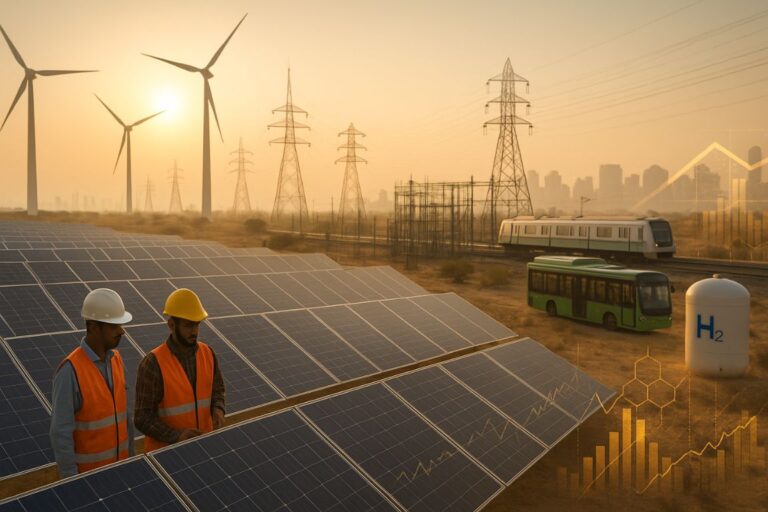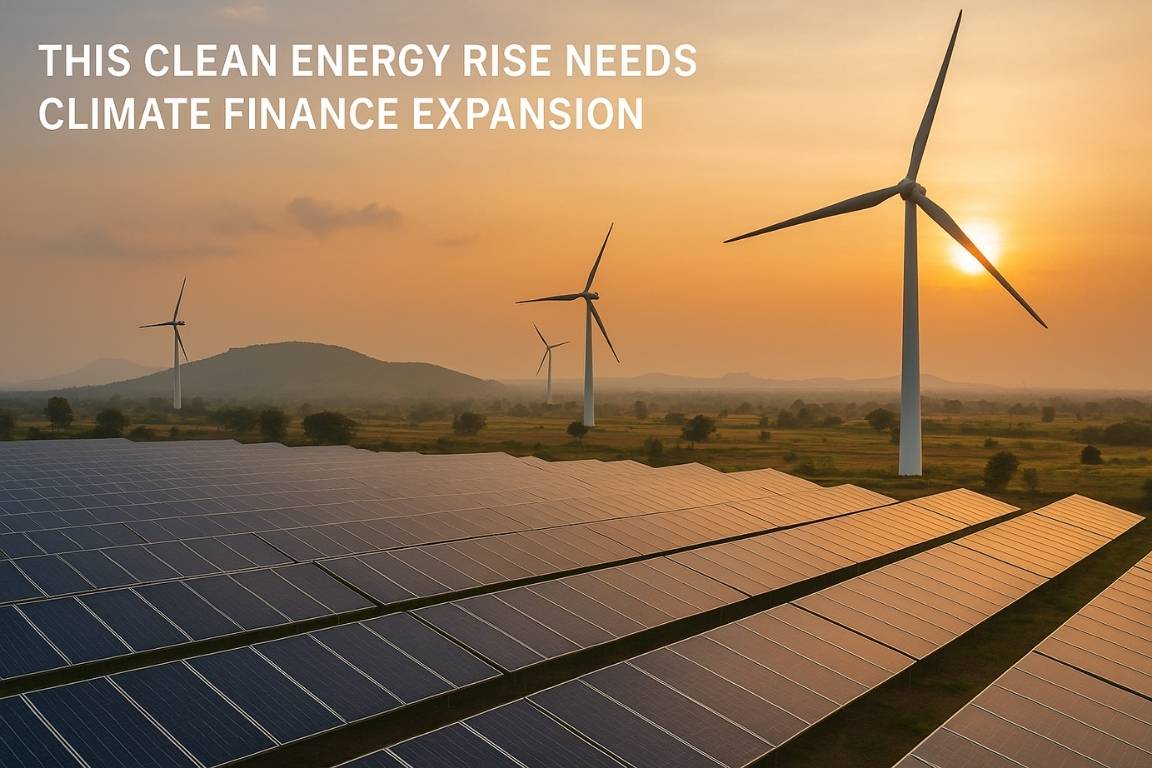India has made remarkable progress in renewable energy, becoming the third-largest solar energy contributor globally in 2024.
India’s Clean Energy Progress
- In 2024, India added 24.5 GW of solar capacity, ranking third globally after China and the U.S.
- Recognised by the UN’s 2025 Climate Report as a leader in solar and wind expansion among developing nations.
- The renewable sector contributed to 5% of India’s GDP growth and employed over 1 million people in 2023.
- Off-grid solar created 80,000+ jobs by 2021. India also leads globally through the International Solar Alliance (ISA).

The Climate Finance Challenge
- India needs $1.5 – $2.5 trillion by 2030 to meet its 1.5°C-aligned pathway and national climate targets.
- Finance is needed for:
- Expanding renewables
- Modernising electricity grids
- Battery storage
- Green hydrogen
- Sustainable transport and agriculture
Current Financing Levels
- Cumulative GSS+ (Green, Social, Sustainability-linked) debt issuance reached $55.9 billion by 2024.
- Green bonds form 83% of this total; investments may cross $100 billion by 2030.
- Yet, access for MSMEs and small innovators remains limited — requiring concessional finance and risk-sharing tools.
Diversified Financing Models
- Use public finance and budgetary tools to attract private capital.
- Promote blended finance combining concessional funds with private investment.
- Adopt credit guarantees and subordinated debt to lower investment risk.
Mobilising Institutional Capital
- Encourage pension funds, insurance firms, and sovereign wealth funds to invest in green projects.
- Reform regulations to support ESG-aligned portfolios and long-term green infrastructure pipelines.
Leveraging Carbon Markets
- Implement the Carbon Credit Trading Scheme with transparency and equity to raise funds.
- Use revenue for adaptation, loss & damage, and community resilience.
Innovation in Climate Finance
- Adopt blockchain for tracking fund flows.
- Use AI-based risk assessment for green investments.
- Develop India-specific blended finance models.
Conclusion
India’s clean energy journey is strong but financially under-supported. To achieve its net-zero and developmental goals, India must lead not only in renewable capacity but also in climate finance innovation, ensuring that both public and private capital flow efficiently into the green economy.





